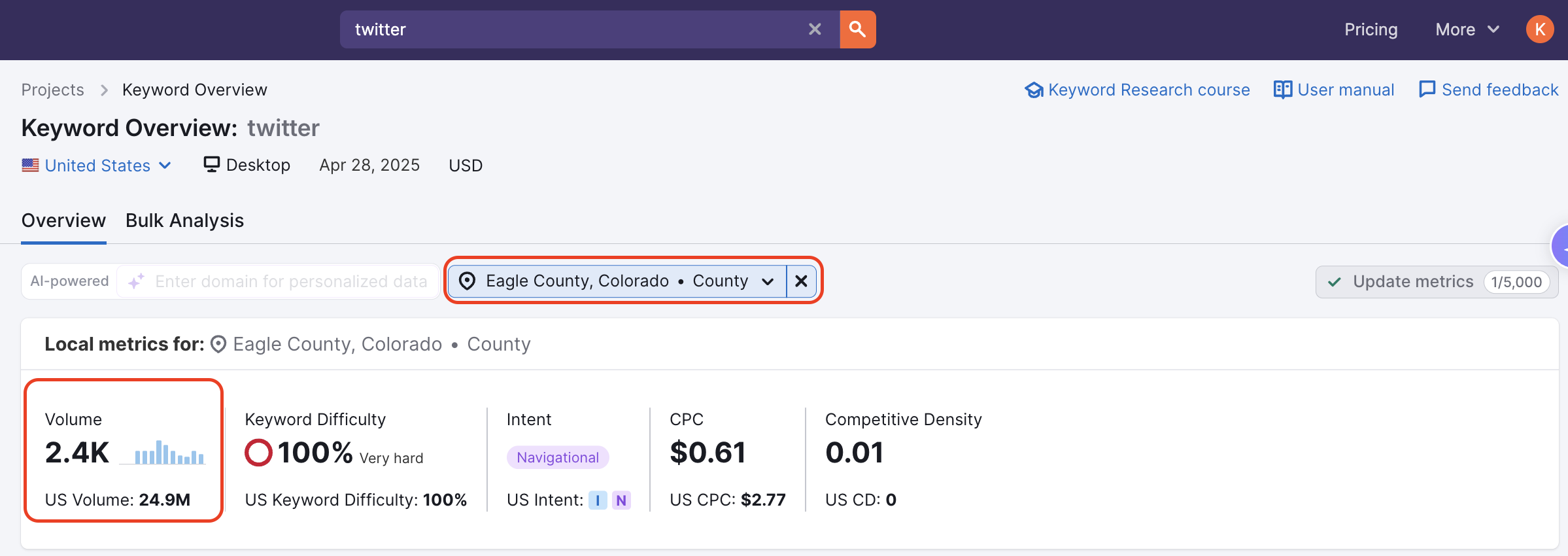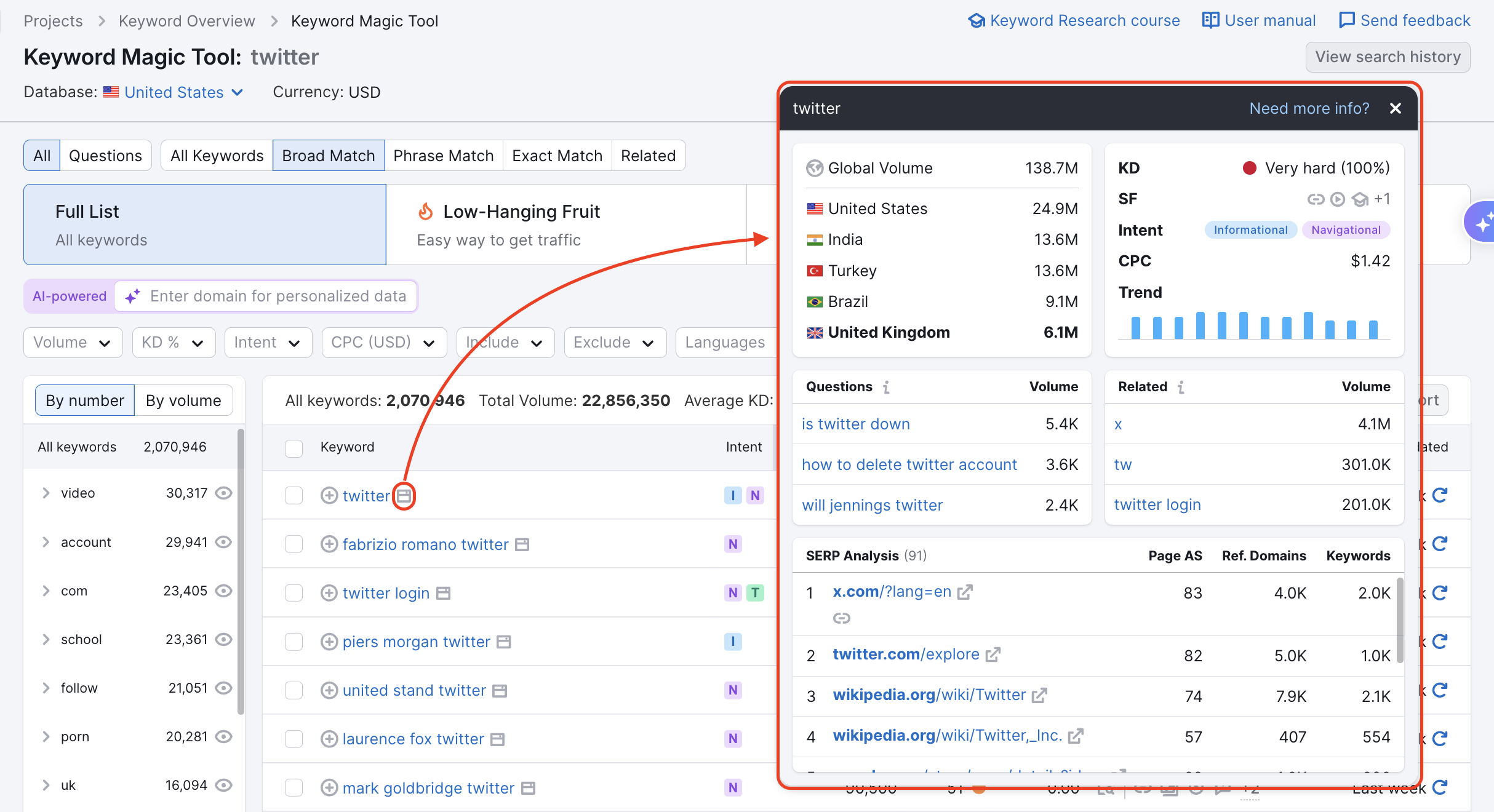What is Search Volume in Semrush?
Search volume is the average number of times a specific search query is entered on a search engine per month.
The volume in the main Semrush database represents the number of searches using national-level data, and in Keyword Overview also using local-level data. Therefore, volume can change when you change a regional or a local database you're viewing (US, US – Eagle County, Colorado, Canada, Canada – Alberta, UK, UK – Bedfordshire, England, etc).
To find a keyword’s search volume, enter the keyword in the Semrush search bar to pull the Keyword Overview report:

Average monthly search volume represents the number of times the keyword was searched over the past twelve months divided by 12. For seasonal and trending keywords, this number could be higher or lower than the average in certain months.
Semrush search volumes are updated on a monthly basis. This is to account for the most recent search data from Google and changes in the search results. Historical data is available to research the recorded average search volumes of keywords in every month dating back to January 2012.
Local Search Volume
If you would like to measure a keyword’s search volume locally, you can select any local sub-location, city, or region in the "Select location" field.

Please note that local volume is only available for one keyword, not in the Bulk Analysis report. Keep in mind that requesting local data will spend 1 "Keyword metrics updates" limit.
Global Search Volume
In addition to the monthly search volume in a regional database, the Keyword Overview will also show you a keyword’s global volume.
Global volume is the sum of the keyword’s monthly search volumes across all of our regional databases.
Also, you can check a keyword’s global volume in the following tools: Keyword Gap, Keyword Magic Tool, and Organic Research.

You can also view the national and local volume in a Position Tracking or PPC Keyword Tool campaign with a set geographic location.
In addition to volume, Semrush provides the CPC and competitiveness of keywords with our Competition Level and Keyword Difficulty metrics. CPC and Competition level relate to Google Ads and Keyword Difficulty relates to SEO.
Semrush Volume Calculation Method
To calculate volumes with the highest accuracy, we use machine learning algorithms and petabytes of accumulated data from search engines. The latter gives us a huge advantage in terms of the ability to train the algorithms we’ve created.
Here’s what the process of volume calculation looks like:
- Semrush takes sets of data from third-party providers and overlays it with historical clickstream data acquired from reliable sources.
- Semrush forwards the resulting set of data to a computing cluster and receives a computational model.
- Semrush applies this model to get the volumes for billions of keywords.
Note: The data used for volume calculation is not split by device. The final search volume numbers (global or local) include both mobile and desktop devices.